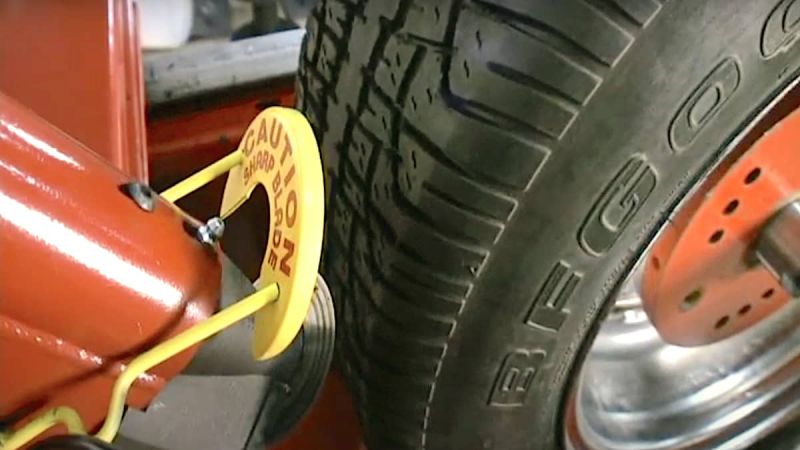AWD Special Tire Needs
According to Consumer Reports, the owner’s manual for modern Subaru’s with all-wheel-drive state that mismatched tire circumferences can cause serious mechanical damage to a car’s all-wheel-drive system. This is not unusual in that in general, the same warning is typically given for most all-wheel-drive vehicles such as SUVs, which necessitates the economic inconvenience of having to buy a complete set of new tires whenever one becomes irreparably flat.
Related article: Everything You Need To Know About Buying Car and Truck Tires
Earlier we had learned several important facts about tire maintenance and repair such as whether tire sealants really do work; whether mixing tires is ok or not and under what circumstances; what tires come highly recommended, which tires you should probably avoid; and, even news about a Subaru hate crime involving tires.
The take-away message of this referring back to earlier tire-related articles is that not all rules you may have heard, apply to all models of cars and the tires they use. As a reminder of some special tire needs for particular vehicle types, here is some background useful tire-related info that compares the differences between 2WD vs. AWD vs. 4WD as explained by Consumer Reports car experts.
That said, in a recent article by Consumer Reports analysts, the reason behind the AWD rule of all tires needing replacing when one goes bad is due to that:
A tire’s circumference gets smaller as the tread wears and the amount of rubber decreases. As a result, a worn tire rotates faster than a new one. For example, Subaru warns owners that mismatched tire circumferences can cause serious mechanical damage to a car’s all-wheel-drive system. Drivers with an AWD vehicle should refer to their owner’s manual for specific guidance on tire replacement.
While this is fine for the tire business, it can be a costly fix for the AWD-vehicle owner. Fortunately, however, there is a low-cost solution to this problem.
Consumer Reports Solution: Tire Shaving
Tire shaving is an old skill not used by most garages or tire centers anymore. Back in the day before modern radial tire design that began back in the 60’s, tires sometimes came out of production described as “out-of-round” due to accuracy problems during the manufacturing process. The out-of-round problem led to vibration problems while driving on the road.
Tire shaving is a specialized process requiring a special machine with an adjustable blade onto which a tire is mounted and spun as the blade comes in contact with the tire. The process essentially carefully peels off thin strips of rubber in a controlled manner until perfection in rounding is achieved.
Tire shaving is also used by race car drivers who have the top tread layers removed to improve traction on racetracks.
However, CR automotive experts point out that tire shaving has it uses for AWD vehicle owners who have one tire of the four go bad from a road hazard in which only one new tire is needed that can be shaved down to match the remaining three partially-worn tires. Thus, saving a significant amount of money. In fact, this is particularly useful for AWD and four-wheel drive vehicle owners who enjoy off-road recreation where flat tires are common.
Tire shaving costs approximately $25-$35 per tire; however, be aware that having this done will likely void the new tire’s warranty.
Limitations to Tire Shaving
Since a typical new all-season tire will have a tread depth of about 10/32 inch and is considered to be worn out at 2/32, CR analysts recommend that tire shaving is ok as long as you limit it to when your other 3 tires still have ½ (approximately 6/32 inch) or more of its original tread intact.
However, CR offers one caveat to this: “… if your tread wear seems inconsistent between tires or there’s evidence of uneven wear, such as one groove wearing faster than another, then it would be better to buy four new tires and have the car checked out for suspension or alignment problems.”
And finally…
For additional articles that are tire-related, check out these “Top Rated and Bargain Brand Cordless Portable Tire Pump Choice for Your Car”; and, “How Service Centers Damage Your Brakes With a Simple Tire Change” articles.
COMING UP NEXT: Consumer Reports Treadwear Testing Reveals How Long Some Tire Types Really Do Last
Timothy Boyer is Torque News Tesla and EV reporter based in Cincinnati. Experienced with early car restorations, he regularly restores older vehicles with engine modifications for improved performance. Follow Tim on Twitter at @TimBoyerWrites for daily Tesla and electric vehicle news.












Comments
If it were that big of a deal
Permalink
If it were that big of a deal, the wheel sensors would "see" the RPM difference and trigger a code I'd expect on any modern vehicle.
I also expect Subaru means mismatched tire diameter. If it's talking about all four needing to be "matched", that would seem an abundance of caution. After all, turning corners creates rpm differences too, it's not like that isn't a frequent occurrence...driving 50ft around a 90* turn, or driving a straight mile with a 1% larger diameter tire on one corner. Which creates more "work" for the differentials, viscous coupling, etc?
I've got no skin in this game, and willing to be shown the error of my thinking. But it seems to me when we are down to the 32nths of tire diameter, it's getting a bit into the nutty realm.